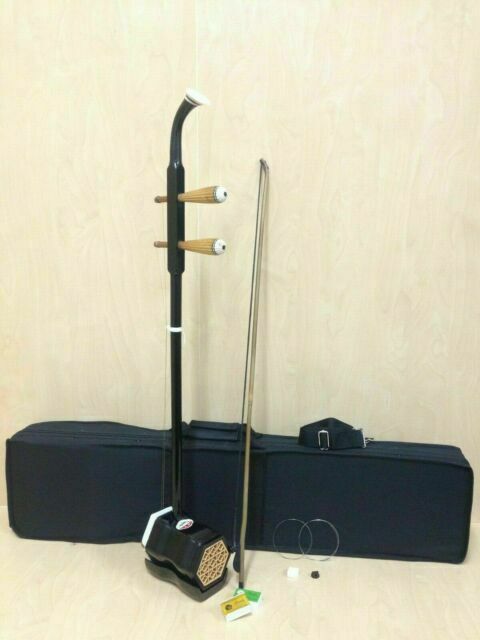-40%
Erhu Heritor handmade, gift bow, strings, rosin, and more.
$ 733.7
- Description
- Size Guide
Description
Specifications:Collection erhu with special designed bian bajiao (oval sharped octagon) resonator.
Materials: aged materials made in 2003-2004, IT'S Hard to get the same quality materials on the market any more.
Maker: famous erhu heritor Zhou Hongkun (周宏坤), he is one of Award Winning makers in China.
Accessories: the erhu is coming with a hard case.
Dimension: 82cm height
Resonator dimension: 10cm width and 8cm height.
Weight: 8.5 lbs with case
Gift: free rosin, one pair of brand name strings, 2 high grade bridges and bow.
Q/A: Any additional question, please feel free to contact us.
Shipping: Shipping in 1 business days. NO shipping on Sunday and holidays. Free shipping in the US, please check Payments and Shipping to other countries.
Sample video using the same erhu by famous erhu player Zhu Changyao: http://youtu.be/DGrOCH_kj44
Introduction to the Erhu:
The instrument also takes the name of huqin, the full term for hu. Its early ancestor was generally known as xiqin (string instrument of a Mongolian tribe called the Xi) in tenth century. Now as an important solo instrument for the recital hall, it is appropriate both for deep tragedy and for the momentum of an avalanche. Besides, it also assumes a central position in the modern Chinese orchestra, as well as in the accompaniment of singing, dancing, and traditional operas. Under the influence of the regularly trained musician Liu Tianhua (1895-1932) and the local minstrel Hua Yanjun (known as Blind Man Ah Bing, 1895-1950) during the 1920's, the erhu developed into a solo instrument. Its two strings are generally tuned a fifth apart and its range can reach three or four octaves. Playing techniques are rich for both hands, including vibratos, harmonic tones, trills, glissando, pizzicato for the left hand and legatos, detaches, martellatos, saltandos, tremolos, flying staccatos for the right hand. Tuning: d1-a1 The best range is from d1 to a2; from a2 to d3, this sound of the range is soft, up is not so well.














